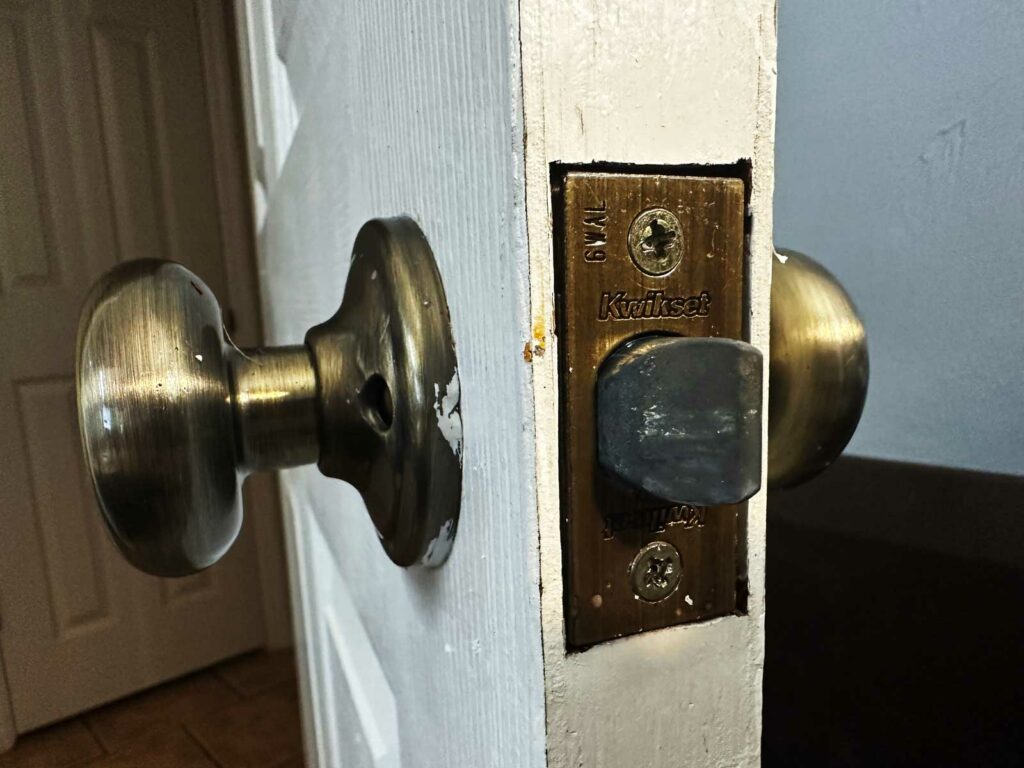Are you struggling with a door latch that won’t retract? It’s a frustrating problem that can prevent you from getting in or out of a room. Fortunately, there are common problems and solutions that can help you fix the issue.
One of the most common causes of a door latch that won’t retract is a misaligned strike plate. This can happen over time as the door and frame shift or settle. Another common cause is a stuck latch bolt, which can be caused by dirt, debris, or rust buildup.
But sometimes it’s not quite that simple.
And fixing it can be frustrating, to say the least!
In this article, we’ll explore these and other common problems that can cause a door latch to malfunction, and provide step-by-step solutions to help you get your latch working properly again.
By the way – before we get too far along here, if you want to connect with other homeowners, DIYers, and builders and get more great ideas for your home to make your space the best join my free private Facebook group, Remodel Reality here.
 When Your Door Latch Won’t Retract: Common Problems and Solutions
When Your Door Latch Won’t Retract: Common Problems and Solutions
As a homeowner, I’ve had my fair share of struggles with door latches that refuse to cooperate. Just like many of you, I’ve found that understanding the root cause is essential for finding a solution. So, let’s dive into the first aspect of door latch issues, which involves examining the door frame and door jamb.
Wood expansion and contraction of the door
One common problem I’ve encountered is the natural expansion and contraction of wooden doors. You see, wood reacts to changes in temperature and humidity, which can cause the door to swell or shrink. This, in turn, affects the smooth operation of the latch. Make sure you keep an eye on how the door behaves during seasonal changes, especially if you have an exterior door made of wood.
Loose hinges on the door or frame
Loose hinges can lead to a misaligned door and, consequently, a door latch that won’t retract. Check the hinges on your door and ensure they’re securely fastened. If you notice any loose screws, tighten them up. Sometimes, you might need to replace the screws with longer ones to ensure they grip the wood securely. This simple maintenance step can save you from a whole lot of frustration.
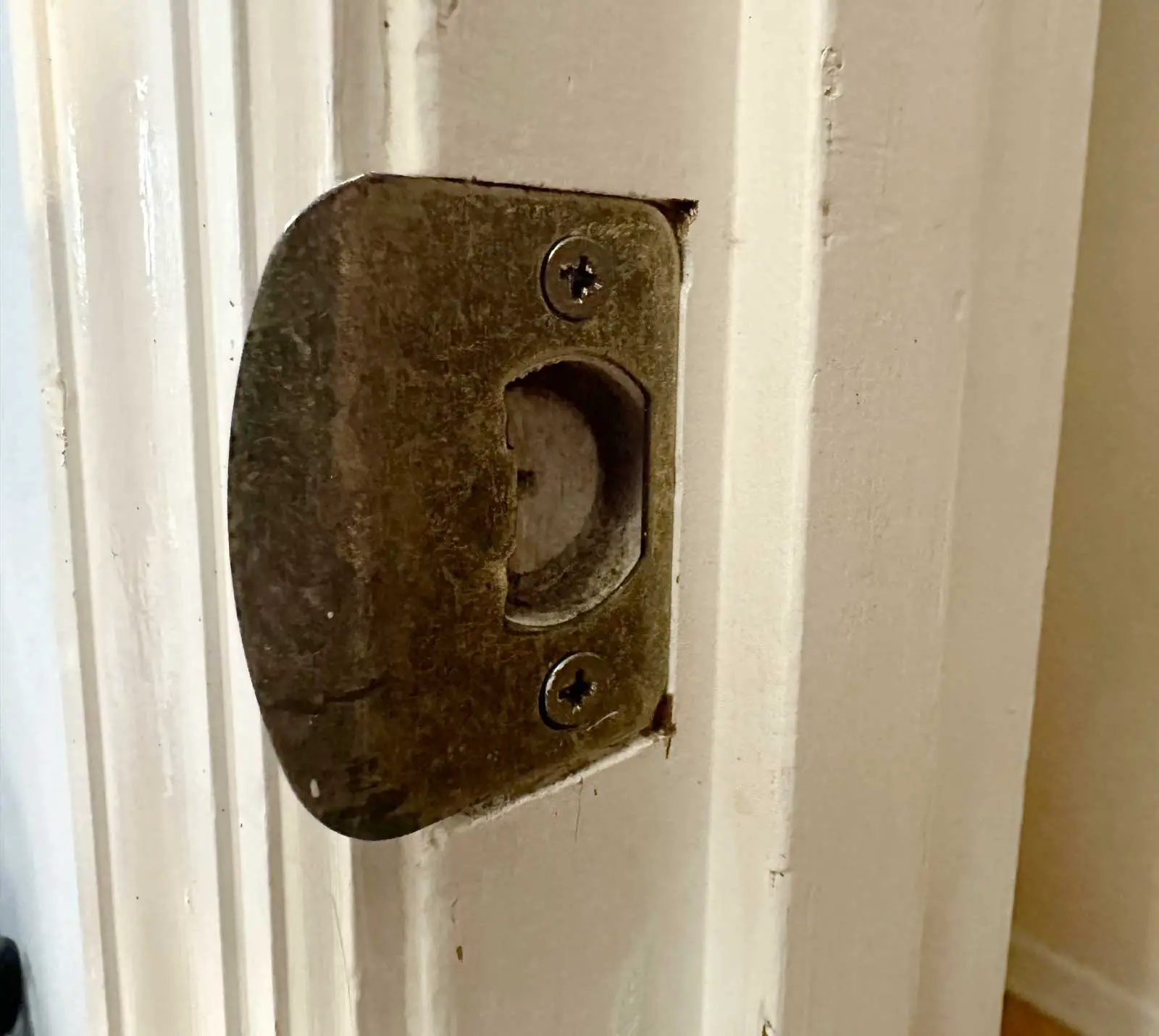 Misaligned strike plate
Misaligned strike plate
The strike plate plays a crucial role in the proper functioning of your door latch. If it’s misaligned, the latch won’t be able to slide into the plate hole smoothly. Inspect the strike plate carefully to see if it’s correctly positioned. If it’s not, you can try loosening the screws, adjusting the position of the plate, and then tightening the screws again. Make sure the latch lines up perfectly with the strike plate hole.
Strike plate hole
Lastly, take a close look at the strike plate hole itself. Sometimes, the hole might be too small or slightly off-center, causing the latch to jam. If this is the case, you can use a metal file to enlarge the hole or adjust its position. Just be careful not to remove too much material, as this can lead to a loose fit and compromise the security of your door.
Here’s a quick overview of common door latch problems, their causes, and the respective short-term and long-term solutions
| Problem | Cause | Short-Term Solution | Long-Term Solution |
|---|---|---|---|
| Stuck latch | Rust or debris | WD-40 or graphite lubricant | Graphite or silicone lubricant |
| Misaligned strike plate | Door or frame movement | Adjust strike plate position | Properly secure door and frame |
| Loose hinges | Worn or loose screws | Tighten or replace screws | Replace with longer screws |
| Damaged latch bolt | Wear and tear | Temporary fix with a card | Replace latch bolt |
| Faulty spring mechanism | Broken or damaged spring | Manually retract latch | Replace spring mechanism |
| Jammed latch | Debris or rust | Apply lubricant | Regular maintenance and lubrication |
| Thermal expansion | Temperature fluctuations | Adjust door or latch components | Use weather-resistant materials |
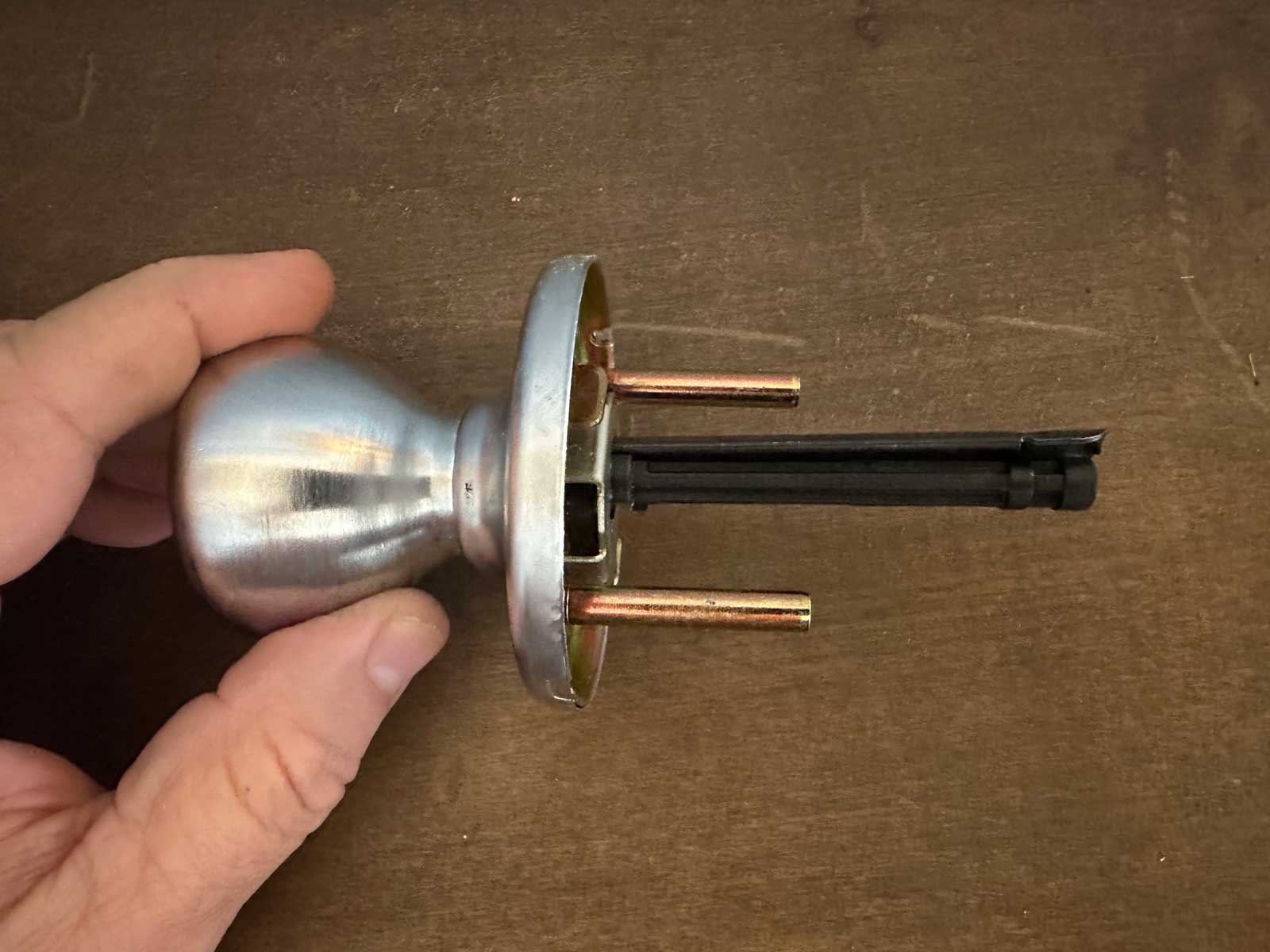 The Inner Workings of Your Door Knob: Fixing Common Issues
The Inner Workings of Your Door Knob: Fixing Common Issues
Now that we’ve looked at the door frame and door jamb, it’s time to examine the door knob and its related components. These parts play a crucial role in the smooth operation of your door latch, and any malfunction can lead to a latch that refuses to retract.
Internal mechanism
The internal mechanism of a door knob consists of various interconnected parts that work together to control the latch bolt. Sometimes, wear and tear or debris can cause these components to malfunction. If you suspect an issue with the internal mechanism, it’s a good idea to take the door knob apart and give it a thorough inspection. You might be surprised at how a little cleaning and lubrication can bring your door knob back to life.
Latch bolt
The latch bolt is the metal piece that slides in and out of the door jamb to secure the door. If it’s damaged or misaligned, it can prevent the door latch from retracting properly. Examine the latch bolt closely for any signs of wear, damage, or misalignment. If necessary, replace it with a new one to ensure smooth operation.
Spring mechanism
The spring mechanism is responsible for automatically retracting the latch bolt when you turn the door knob. A faulty spring mechanism can cause a stuck door latch. Check the spring and make sure it’s not damaged or broken. If it is, you’ll need to replace it with a new one.
- Replacement latch for Oil Rubbed Bronze, Passage/Hall & Closet, Emblem Series locksets
- 6-Way universal latch for left or right hand doors
- ANSI Grade 3 certified for residential security
- Adjusts for 2-3/4″ and 2-3/8″ backsets; Fits 1-3/8″ and 1-3/4″ thick doors
- 5-Year limited mechanical/5-Year limited finish warranty
Jammed latch
Sometimes, debris or rust can cause the latch to jam, preventing it from retracting. If this is the case, try applying a lubricant, such as graphite powder, to the latch to help it slide more easily. You can also use a flexible straw to direct the lubricant into hard-to-reach areas.
Spindle hole
The spindle hole is where the spindle, the long metal rod that connects the two sides of the door knob, passes through the door. If the spindle hole is damaged or misaligned, it can cause the door latch to malfunction. Inspect the spindle hole and ensure it’s in good condition. If necessary, you can use a metal file to correct any irregularities.
Handle set
Finally, take a close look at the handle set, which includes the door knob and any related hardware. Make sure all the components are in good condition and securely fastened. If any parts are damaged or loose, consider replacing them to ensure the proper functioning of your door latch.
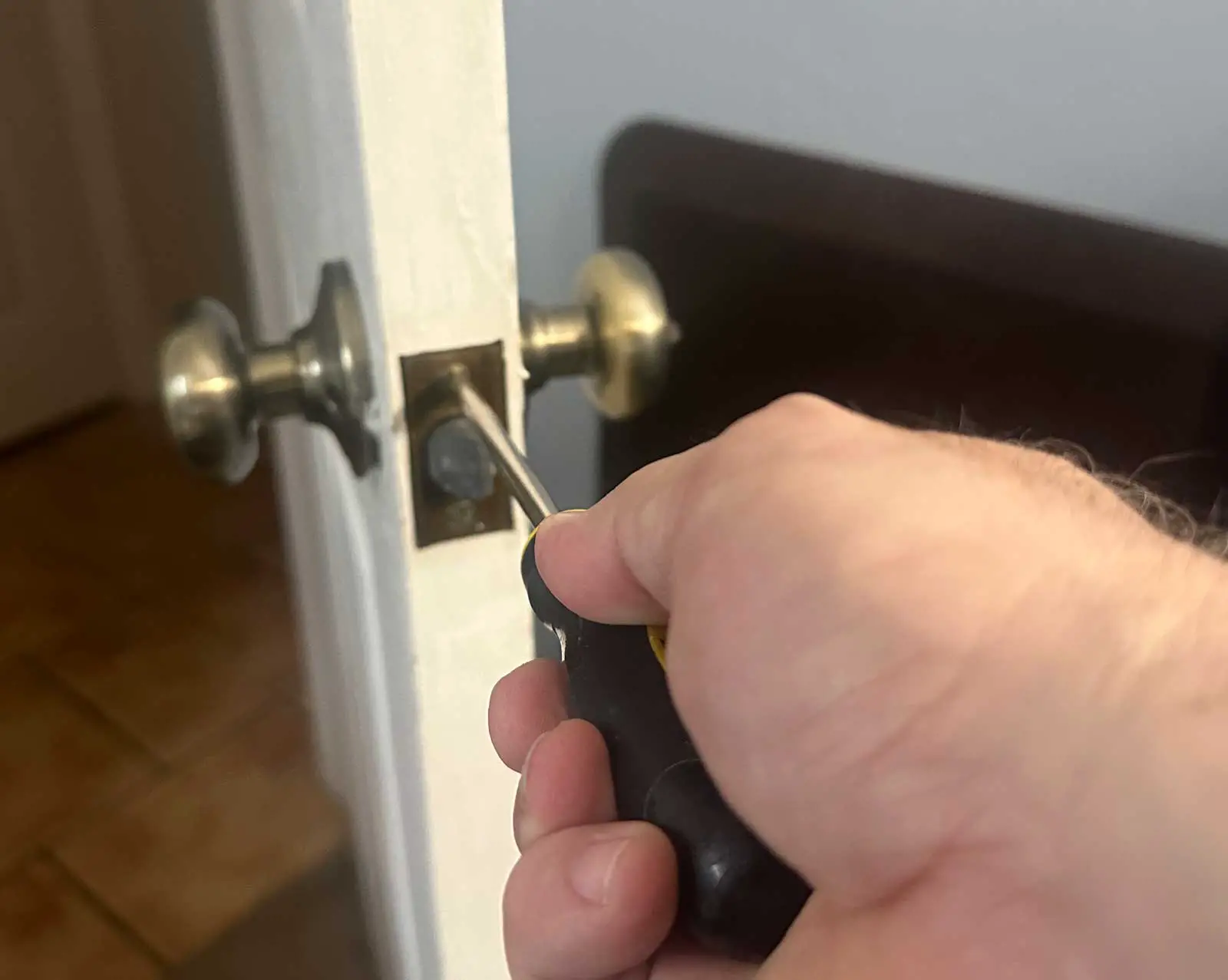 Troublesome Latches: Understanding Door Latch Issues and Their Possible Causes
Troublesome Latches: Understanding Door Latch Issues and Their Possible Causes
Now that we’ve covered examining the door frame and door knob components, let’s dive deeper into door latch issues and their possible causes. Let’s cover issues about closed door positions, spring-loaded pins, jammed latches, thermal expansion, and why it’s essential to keep an eye on those metal parts for any signs of wear and tear.
Closed Door and Closed Position
One factor that could lead to a door latch not retracting properly is the closed door itself, which can cause the latch to remain in the closed position. This might happen if the door isn’t shutting completely or if the latch isn’t correctly aligned with the strike plate. Make sure your door is closing correctly and the latch is lining up with the strike plate to eliminate this possibility.
Spring-loaded Pins
Another potential issue involves spring-loaded pins within the latch mechanism. These tiny components are responsible for retracting the latch when the door handle is turned. If the spring-loaded pins are worn, damaged, or misaligned, your door latch may not retract as it should. Inspect the pins for any visible signs of wear and replace them if necessary.
- EASY INSTALLATION: Install your knob set in a flash. All you need is a door and a tool set! No need for professional door fitters, you can do it yourself!
- PRIVACY FUNCTION: The door knob can be locked inside and opened outside in emergency WITHOUT keys. Use it for your guest rooms, bedrooms, bathrooms, interior locking doors and other privacy needs; Material: Metal; Finished Color: Oil Rubbed Bronze.
- ONE SIZE FITS MOST: This bronze door knob fits 1-3/8″ to 1-3/4″ doors; Reversible for both left handed and right handed doors. (Notice: The latch plate is unremovable.)
Jammed Door Latch
Jammed door latches can also cause a door latch not to retract. A jammed latch is often the result of rust accumulation or debris inside the mechanism. Regular maintenance and lubrication can help prevent rust and keep your latch functioning smoothly.
Thermal Expansion
Thermal expansion is another factor that could contribute to a door latch issue. Temperature fluctuations can cause your door or the metal latch components to expand or contract, leading to a misaligned or sticky latch. Be mindful of extreme temperature changes and consider using weather-resistant materials for your door latch to minimize this problem.
Metal Latch and Metal Pieces
Lastly, the metal latch and metal pieces within the latch mechanism can wear down over time, which can lead to a door latch not retracting. Regularly inspect these components for wear and tear, and replace them when needed to ensure your door latch operates smoothly and reliably.
Now that we’ve discussed possible causes for door latch issues, let’s move on to troubleshooting and fixing them. In this section, we’ll explore various approaches to help you tackle that stubborn door latch, from the easiest way to more advanced solutions.
The First Step and Easiest Way to Tackle the Issue
Before diving into more complex solutions, let’s start with the easiest way to address a stuck door latch. Sometimes, all it takes is a couple of tries turning the door knob to get that stubborn latch to retract. However, if it doesn’t work, don’t worry, we’ve got other solutions up our sleeves.
The Magical Duo: Flexible Straw and Graphite Lubricant
One of the most common reasons for a sticky latch is rust accumulation or debris stuck in the internal mechanism. A simple solution is to use a flexible straw to apply graphite lubricant directly to the latch bolt and the lock body. Graphite powder is an excellent choice as it not only helps to loosen the jammed latch but also prevents future rust.
Unlock Your Door with a Card: A Quick Fix for Sticky Latches
If the graphite lubricant doesn’t work, let’s try the credit card trick. Insert the card between the door frame and the side of the door, right where the latch is. Gently push the card while turning the door knob, and the latch should retract. Remember, this method is just a short-term fix, and it’s essential to address the cause of the problem for a long-lasting solution.
Lock Position, Locking Mechanism, and Other Fixes
For some cases, especially with Kwikset locks or Schlage door latches, the lock position might be misaligned, causing the latch to stick. Check the locking mechanism and the spindle hole for any obstructions or misalignment. If that’s the issue, fixing the lock position or aligning the spindle hole should solve the problem.
Replacement Parts: When It’s Time for a Change
If none of the above methods work, it might be time for a more drastic solution: replacing the faulty parts. Whether it’s a new latch, spring bolt, or an entire door latch mechanism, investing in higher-quality lock products will save you time and hassle in the long run. You can find replacement part at Home Depot or other hardware stores (or you can pick up what you need using the links in this post), and you’ll likely need the help of a professional locksmith for installation.
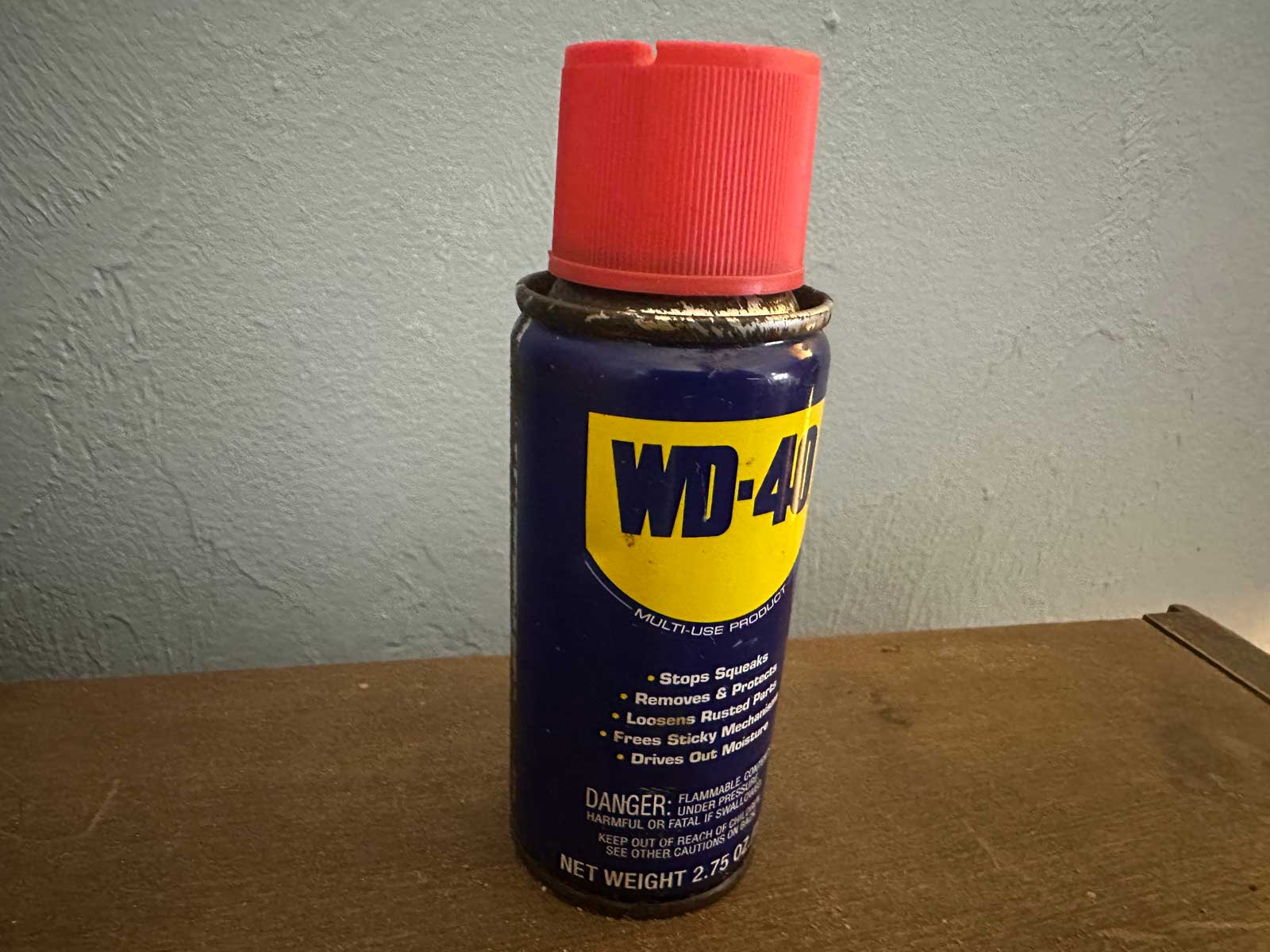
Tools You Need To Fix Your Door Latch
If you find yourself in a situation where your door latch won’t retract, so let’s gather the essential tools and supplies you’ll need to fix your door latch.
| Tool/Supply | Purpose |
|---|---|
| 1. Screwdriver (Phillips and/or flat-head) | For removing or tightening screws on the door hardware |
| 2. Needle-nose pliers | For gripping small parts or adjusting components within the latch mechanism |
| 3. Small adjustable wrench | For tightening or loosening nuts or bolts, if required |
| 4. Allen wrench or hex key | For working with hexagonal screws, if applicable to your door hardware |
| 5. Lubricant (graphite powder, silicone spray, or lock lubricant) | For reducing friction and helping the latch retract smoothly |
| 6. Small brush or cotton swab | For applying lubricant to the latch mechanism |
| 7. Clean, lint-free cloth | For wiping off excess lubricant and cleaning components |
| 8. Thin, flat piece of plastic or metal (e.g., credit card or putty knife) | For shimmying the latch, if necessary |
If you don’t have the tools, that’s not a problem. I’ve picked a couple that I use projects like this that you can pick up below.
Navigating Quick Fixes and Long-Term Solutions for Door Latch Woes
Now that we’ve explored various ways to identify door latch issues let’s dive into solutions that offer both immediate relief and lasting security. In this section, you’ll discover temporary fixes that can tide you over, as well as more permanent measures for the long haul.
Handy Short-Term Remedies for Door Latch Quandaries
When faced with a finicky door latch, a quick fix can provide some much-needed relief. For these instances, a few DIY hacks might just do the trick.
I previously mentioned several quick tips, like using a credit card, using a straw and graphite powder, or re-aligning the lock position, once you’re able to get it open.
One solution that I use all the time is to hit it with WD-40 a couple of times. Is there anything that WD-40 can’t fix?!?
No products found.
WD-40 can be a helpful short-term solution for a stubborn door latch. This versatile lubricant can penetrate and loosen rust, dirt, and debris that might be causing the latch to stick. To use WD-40, just spray it directly onto – or into – the latch mechanism, and then work the door handle or knob to help the lubricant penetrate the moving parts.
However, keep in mind that WD-40 isn’t a great long-term solution. It’s more of a temporary fix, because it will attract dust and grime over time, potentially causing the latch to stick again unless you clean it thoroughly once you’re able to get it dislodged. For a more enduring solution, consider using a dry graphite lubricant or a silicone-based lubricant, both of which offer longer-lasting protection and are less likely to attract dirt.
So while these are all great solutions for minor issues and provide some quick relief for a stubborn door latch, for more severe cases, these quick fixes may not be enough to provide lasting security.
Investing in Long-Term Solutions for Unwavering Door Latches
There comes a time when temporary fixes just don’t cut it, and you need a more permanent solution. Replacing the latch and latch assembly can revolutionize how well your door works. A brand new latch can eliminate recurrent issues, while replacing damaged or worn components—like the latch bolt, spring mechanism, or lock body—can provide lasting relief.
For a reliable door latch, consider investing in a high-quality brand like Schlage, synonymous with durability and top-notch door hardware.
Another reputable name in the world of door latches is Kwikset, a perfect blend of affordability and quality that appeals to numerous homeowners.
Opting for high-quality products can save you time, money, and frustration in the long run. Seek out well-reviewed brands with a reputation for dependability. And, if you’re unsure about the best course of action for your door latch troubles, consulting a professional locksmith can be a wise choice. Their expertise and experience will ensure your problem is diagnosed and resolved efficiently and effectively.
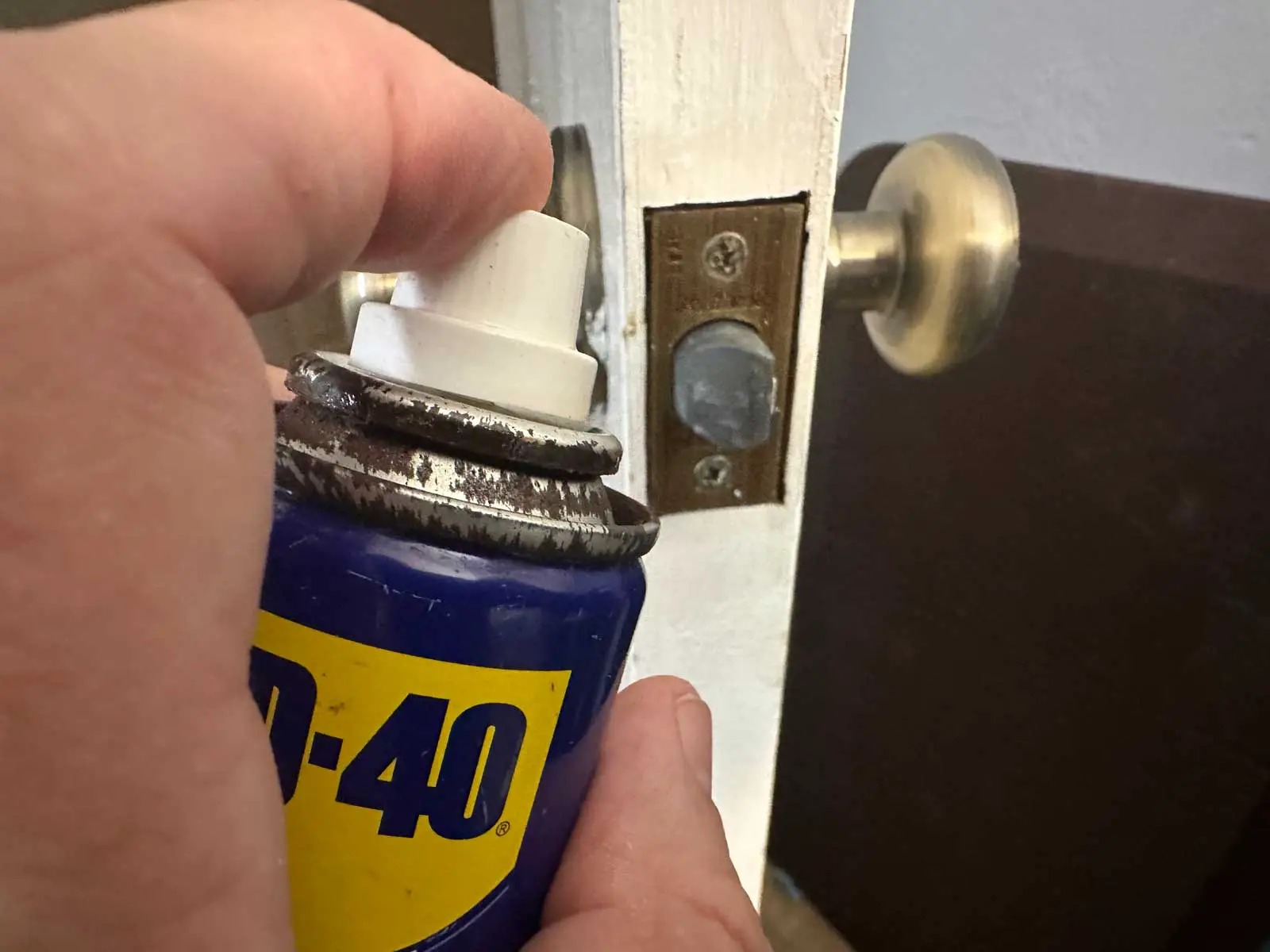 Proactive Door Latch Maintenance: Tips for Ensuring Smooth Operation
Proactive Door Latch Maintenance: Tips for Ensuring Smooth Operation
Transition: Now that we’ve covered ways to troubleshoot and fix door latch issues, let’s focus on preventative measures. This section will offer valuable tips for maintaining your door latch, ensuring its smooth operation and longevity.
Keep a Close Eye on Your Latch Mechanism
One of the most effective ways to keep your door latch in tip-top shape is by conducting regular inspections. By examining the latch mechanism, you can identify any signs of wear or damage early on, addressing issues before they escalate into bigger problems. Make it a part of your routine home maintenance checks, and you’ll be well on your way to prolonging the life of your door latch.
Shield Your Latch from Unwanted Wear
Rust accumulation can wreak havoc on door latches, causing them to stick, jam, or fail altogether. To avoid this issue, make a habit of cleaning your door latch and applying lubricants, like graphite powder or silicone-based lubricants, to the moving parts. This will not only keep your latch operating smoothly but also prevent future rust buildup.
Opt for Exterior Door Materials with Minimal Maintenance Needs
The materials you choose for your exterior door can significantly impact the maintenance requirements of your door latch. Selecting materials that demand less upkeep, such as fiberglass, steel, or composite doors, can help ensure your door latch remains in good working condition for years to come. These materials are resistant to warping, swelling, and other issues that could compromise your door latch’s functionality.
Quality Matters: Invest in High-Quality Front Door Locks
When it comes to your home’s security, investing in higher-quality front door locks is a wise decision. High-quality locks, like those from Schlage or Kwikset, are built to withstand the test of time, providing you with peace of mind and reducing the need for constant repairs or replacements. By opting for top-of-the-line lock products, you’ll enjoy smoother door latch operation and increased home security.
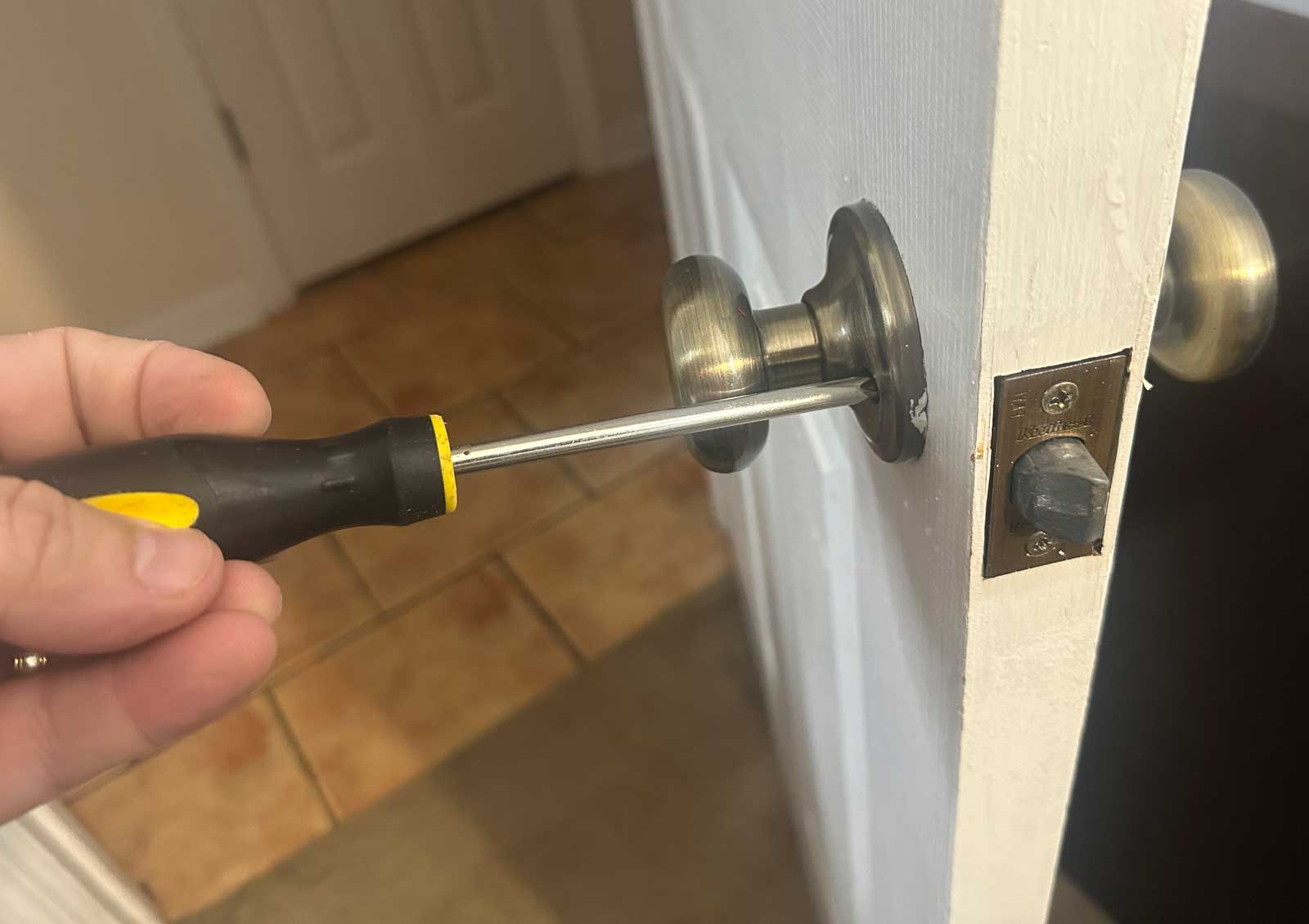
Next Steps
Want to join others who are creating the most amazing home redesigns & renovations and get more tips, tricks and hacks on how to make your home the best it can be?
Join my brand new free private Facebook group, Remodel Reality to connect with other people like you to make your space the best!
